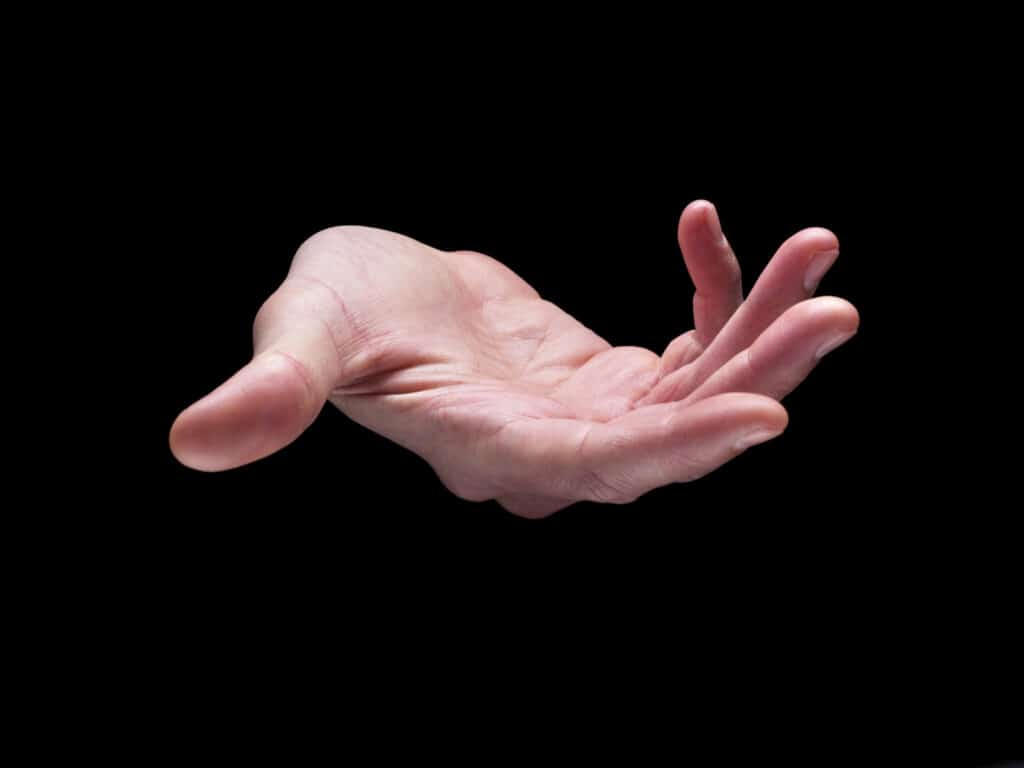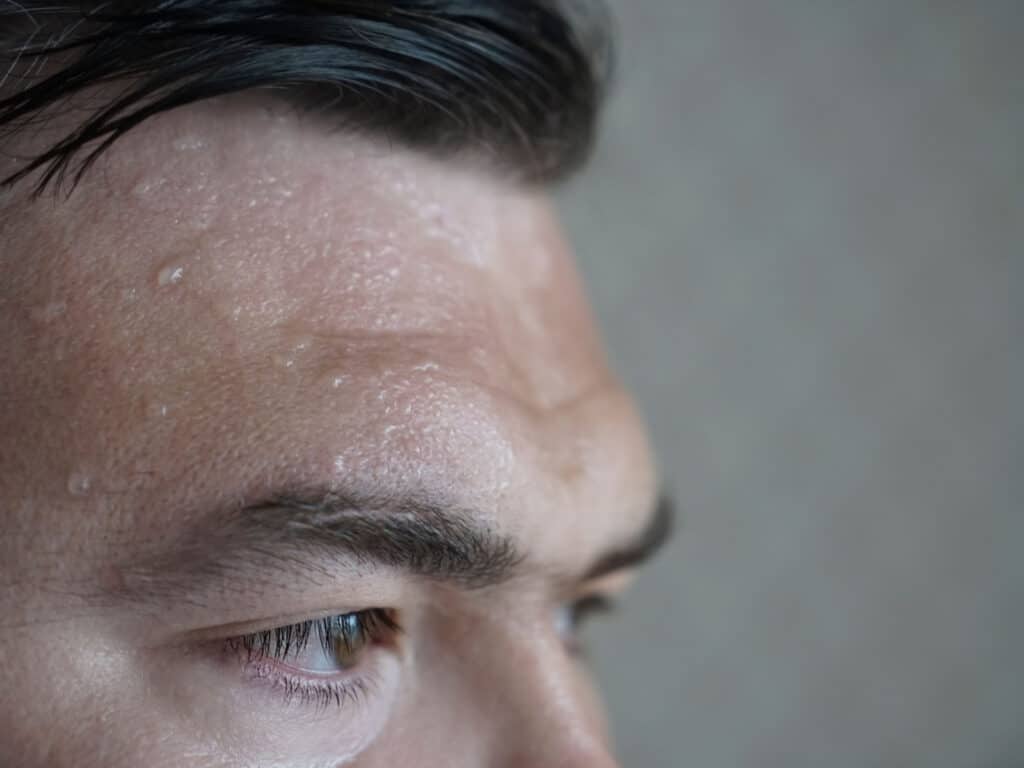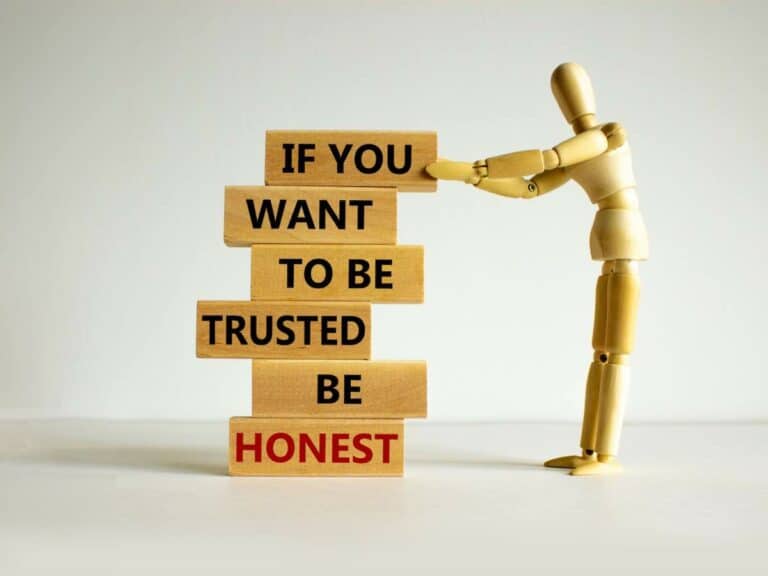16 Body Language Cues To Watch When Detecting Lies
The average American states 1 to 2 lies a day. The good news is that you don’t need to consult a psychologist or polygrapher near you to tell truth tellers and lie tellers apart. In many instances, you simply need to observe the body language of the person standing before you to determine right on the spot whether he or she is an honest individual or a shameless liar.
Body language cues including facial expressions and hand gestures can tell away a lying person. His or her posture and movements may also indicate whether or not fibs are being stated. By observing non-verbal cues, you can peek into a person’s mind and determine if you are being lied to even if you’re no Sigmund Freud or Carl Jung.
People send out non-verbal cues through their body language. In this post, we will talk about 16 different ones that can help you separate the truth tellers from the deceivers.
Just a warning: the tips below are far from being definitive. A person who appears to be lying based on body language isn’t necessarily a liar. Paired with what your instinct is telling you as well as the general consensus, you can have a much better idea of who to trust and who to doubt.
1. Use of the non-dominant hand
Especially if you know the suspected liar for some time now, you should have an idea of whether the person is left- or right-handed. Carefully observe which hand the individual uses in emphasizing strong statements — he or she might be fabricating lies if the non-dominant hand is the one being employed.
A person who once exhibited this was Bill Clinton.
Left-handed Clinton used his right hand instead while denying allegations of having sexual relations with Monica Lewinsky — just check out this YouTube video of that instance to see it with your own eyes!
2. Gesturing with both hands
In 2015, researchers from the University of Michigan who were building a lie-detecting software tool studied 120 video clips from actual media coverage of high-stakes court trials to obtain real-world data.
They found out that liars gestured with both of their hands in up to 40% of the lying video clips.
Generally speaking, based on the said study, researchers discovered that deceitful people tend to use their hands more in an attempt to look convincing. And researchers from another institution, the University of Michigan, agree — based on a similar study, they learned that liars have the tendency to use animated hand gestures.
3. Delayed hand gestures
Feel like watching a movie where the video and audio aren’t in sync? If the person before you gestures with his or her hand after an important word or sentence, there’s a possibility that you’re being lied to.
Deceptive individuals experience an increase in cognitive load because their minds are doing many things all at once, from making up the lie, determining if the lie is believable to delivering it in a convincing way. As a result of this, a gesture sometimes occurs after the person has stated what it’s supposed to accompany.
Extra cognitive load, by the way, is what makes both brain scan and eye scan reliable truth-telling procedures.

4. Palms facing the liar
Criminal investigators say that dishonest people tend to face their palms away from those to who they are lying to.
It’s like a subconscious way for them to tell others that they are hiding something, such as their emotions and important pieces of information. In some instances, liars put their hands in their pockets or even place them under the table — anything that can keep their palms away from view.
Showing the palms, meanwhile, is often a sign of peaceful intentions, say experts. Those who keep their palms visible are generally considered so much more trustworthy and credible.
It’s a common practice for us to tell someone to look us in the eye just to make sure that he or she isn’t lying. In some instances, this is unnecessary because no matter where the individual chooses to look, it’s possible for you to detect deception simply by keeping your eyes on his or her peepers.
You can’t spot a liar just by looking. However, knowing what to look for in the person’s eyes can help you have a much better idea if what’s being told to you is nothing but the truth or everything but the truth.
5. Enlarged pupils
It is said that the eyes are the windows to the soul. The pupils, on the other hand, are literal windows. That’s because they are openings that allow light to enter the eyes.
Earlier, it was mentioned that increased cognitive load due to lying can cause hand gestures to be delayed. Well, it can also cause the pupils to enlarge.
It’s this principle that has allowed eye scanning as a form of a lie detector exam to come into being. According to proponents, an eye-scanning lie detector has an accuracy rate of 88%.
Keep in mind that, besides added cognitive load, a few emotions can also cause the pupil to dilate. Some of them include excitement, fear and anxiety — although we can all agree that they can be associated with lying.
6. Eyes darting here and there
Gone are the days when those who look upward to the left are telling the truth and those who look upward to the right are stating lies. Numerous studies have debunked these long-running myths.
To have an idea if a person is lying, don’t focus on where the person looks — just check if his or her eyes keep darting. It’s just a part of the fight or flight response, which lying activates. Subconsciously, the deceitful person is surveying the area for the best exit point to escape from the perceived threat.
Besides moving the eyes from side to side quickly, someone who is telling a lie may also blink rapidly.

7. Eyes shut longer
Speaking of blinking, scientists say that a blink normally lasts for only 0.1 to 0.4 seconds.
Lying changes everything — a blink can be as long as a second or even longer. Experts believe that it has something to do with the fact that deceivers simply want to shield themselves from the reactions of people to their fabrications. After all, nothing can be more devastating to liars than getting caught red-handed.
Because lying takes more cognitive load, blinking longer than usual allows liars to be able to spend their resources on cooking up some of the most believable and coherent lies.
8. Too much eye contact
If you think that a liar will avoid looking you in the eye at all costs, think again. According to an experiment conducted by the faculty members of the Department of Psychology at the University of Portsmouth, which is a public university in the UK, liars actually make more eye contact than truth-tellers.
One of the reasons for such, as hypothesized by the professors, is to make them more convincing.
They also presume that it’s done by deceitful people to check for signs if the persons they’re lying to are not buying their falsehoods so that they can come up with even more lies as a form of damage control.
Deceitful people will do their best to make their lies appear like they’re absolute truths. Otherwise, they could end up facing the consequences of lying, which can range anywhere from light and modest to life-shattering and irreparable. In many instances, an individual’s face can reveal deception.
It’s for the very same reasons why polygraphers are on the lookout for micro expressions, or fleeting expressions that can be associated with all sorts of emotions, including fear and guilt associated with lying.

9. Itchy nose
A polygraph examination is able to detect deception by monitoring the subject’s blood pressure — if the machine detects an increase in blood pressure, the individual might be lying.
When the blood pressure rises as a result of telling a lie, the capillaries in the nose expand. This can cause a tingly or itchy sensation, thus causing the devious person to touch or scratch his or her nose. An itchy nose, of course, could indicate allergies and the common cold, too. But paired with some telltale signs of dishonesty, the person could be lying.
Each time Pinocchio lies, his nose gets longer. The nose of some humans, on the other hand, gets itchy.
10. Lips pressed together
According to an article by Psychology Today, the lips of people get smaller or disappear completely when stressed. Since lying can increase one’s stress levels, it isn’t surprising why some press their lips against one another when lying.
The said article adds that, in a romantic setting, the tightening of the lips could indicate that there’s cheating or any other related issue at hand. Even kisses would feel different from usual. That’s because the lips, which are highly vascular structures, end up getting less blood supply in times of stress.
Some liars may unknowingly bite their lips instead of compressing them.

11. Smirking than smiling
There are a couple of reasons why a liar might smirk. First, he or she is having doubts deep inside as to whether or not the lie is believable enough. Second, the individual feels that you bought the lie and a smirk feels equivalent to laughing out loud in celebration. In any case, a conceited smile could mean that you should probably do some prodding.
Needless to say, if the person is not taking a selfie but appears to be smirking after sharing a piece of information with you, chances are that what her or she said is far from the truth.
It’s also not uncommon for a liar’s face to exhibit a lack of symmetry, which pretty much explains a smirk.
12. Head tilting to one side
Sometimes, it’s not just the face of a liar that can become asymmetrical but also his or her entire head.
In most instances, head tilting takes place just before he or she answers a question, particularly if giving an untruthful answer is the goal. And there’s only a single possible interpretation for this: the individual is not too certain if the lie is going to be believable enough for you to be convinced and ask no further questions.
Other than being tilted to the side, the head of a deceitful person may also be either bowed down or jerked back. Such is a subconscious effort to hide his or her face, which could have the lie written all over it.
13. Complexion change
Certain medical conditions such as anemia and vitamin deficiency can cause paleness. But it’s a different thing if the person suddenly becomes as pale as a ghost when telling you something — he or she could be telling you a lie.
Lying activates the fight or flight response. And when this happens, the body diverts oxygenated blood to where they are needed the most: large muscle groups needed for battling or evading the perceived threat. And since the face is not a major role player in the quest to survive, the amount of blood in it drops.
Besides looking pale, the face of a liar who feels nervous about the deed will also feel cold to the touch.
There are so many other body languages that can give away a liar, which is why your peepers should be very quick and observant if you want to catch deception as it happens right before your face.
14. Making the body look smaller
Feel like shrinking until you disappear whenever you feel embarrassed, mortified or at fault? You’re not alone! Liars, especially those who believe they just did a terrible job at lying or want to avoid getting caught, feel so uncomfortable that they just want to run and hide away from view.
But because they can’t do that, they settle with making themselves look smaller, such as by crossing their arms or legs or rolling their shoulders upward and forward — anything that can make them less of a target.
Truthful people, since they have nothing to hide, tend to exhibit a more open posture.

15. Increased sweat production
Many things are monitored and recorded by a polygraph machine. One of them is sweating. Needless to say, a person who is undergoing the test and suddenly becomes sweaty could be lying.
The activation of the fight or flight response when being deceptive can cause your heart to beat faster and your lungs to work harder. It can also cause your sweat glands to produce more sweat. Liars tend to have more sweat in the armpits and groin, although their garments can keep them from view and thus make it harder to detect deception.
However, you can check the palms and T-zone of the face if they are drenched in sweat.
16. Constant fidgeting with the appearance
It’s perfectly fine for anyone to make sure that he or she looks her best by fixing the hair with the hands or adjusting a part of the clothing or accessories like eyeglasses or a wristwatch.
However, something’s definitely amiss if the person is fidgeting in relation to his or her appearance immediately before, during or right after saying something. It’s a quick and accessible way for the deceitful individual to try to get rid of excess adrenaline brought about by stress triggered by telling a lie.
Knowing the person better allows you to detect deception through his or her body language better. In some instances, mannerisms universally accepted as attributable to lying are not the ones that can help you uncover the truth but those that are unique to the individual whose veracity you are doubting.
Are his or her non-verbal communication cues off? Why is he or she responding to me now differently?
If someone seems to be behaving unusually all of a sudden, chances are that something is wrong. And one of the many possible reasons for it is the individual might be telling you a lie.
According to a study co-authored by a professor at the University of Wisconsin – La Crosse, around 75% of people tell up to 2 lies each day and that 51% commonly lie to their friends and 21% usually lie to their families.
What a liar says may fool you alright but not his or her body language.
In most instances, the bodily movements of a deceptive person do not agree with the words he or she says. Above, I talked about some non-verbal communication cues that can help you determine whether or not you can rely on the individual standing before you — being observant can turn you into some sort of walking and talking lie detector machine.
However, detecting lies through postures and gestures is not 100% accurate and reliable at all times because those associated with deception can also be connected to a bunch of other things.
Before you call someone out, use other lie-detecting means in order to be certain that he or she is lying.
Read Next: How to Detect Lies in Text Messages






